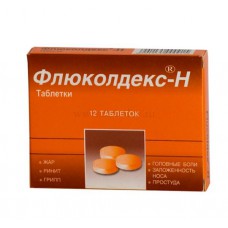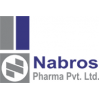Expiration date: 07/2025
Composition and form of issue:
Tablets. 1 tablet contains:
caffeine 30 mg
paracetamol 500 mg
chlorphenamine maleate 2 mg
in a contour bezgyachakova package 4 PCs. in cardboard pack 3 or 50 PCs. or contour acheikova packing 12 PCs. in cardboard pack 1 pack.
Characteristic:
Combined preparation.
Effects on the body:
Caffeine has a moderate psychostimulatory effect, temporarily reduces the symptoms of fatigue and drowsiness. On the cardiovascular system, due to the combination of Central and peripheral action on the heart and blood vessels, affects ambiguously: coronary vessels, as a rule, expand, and the brain vessels — toned, blood PRESSURE increases slightly (more often in the initial hypotension). Caffeine increases the basic metabolism, has a moderate myotropic antispasmodic effect (expands the bronchi, bile ducts), stimulates the secretion of gastric glands, slightly increases diuresis.
The pharmacological properties of caffeine are due to its competitive antagonism with adenosine at the level of A1-adenosine receptors and inhibition of phosphodiesterase activity.
Paracetamol has analgesic and antipyretic effect. These properties are due to the inhibition in the Central nervous system synthesis of PG-modulators of pain sensitivity and thermoregulation. Anti-inflammatory effect is virtually non-existent. Chlorphenamine - blocker of histamine H1-receptors. Also has some local anesthetic anti-allergic, antispasmodic, anticholinergic, sedative and hypnotic effect. Effective for kinetosis (syndrome of motion sickness) and Meniere's disease.
Dosage:
Description of active substance (INN):
Paracetamol+Caffeine+Chlorpheniramine
Dosage form:
Tablets
Pharmacological action:
Combined preparation. Caffeine has a moderate psychostimulatory effect, temporarily reduces the symptoms of fatigue and drowsiness. On the cardiovascular system through a combination of Central and peripheral action on the heart and blood vessels effect is ambiguous: the coronary vessels usually dilate, and the blood vessels of the brain - toniziruyut, HELL will raise (often with the source of hypotension). Caffeine increases the basic metabolism, has a moderate myotropic antispasmodic effect (expands the bronchi, bile ducts), stimulates the secretion of gastric glands, slightly increases diuresis. The pharmacological properties of caffeine are due to its competitive antagonism with adenosine at the level of A1 adenosine receptors and inhibition of PDE activity. Paracetamol has analgesic and antipyretic effect. These properties are due to inhibition of synthesis of Pg - modulators of pain sensitivity and thermoregulation in the Central nervous system. Anti-inflammatory effect is virtually non-existent. Chlorphenamine-blocker of H1-histamine receptors. Furthermore antiallergic activity, has a local anesthetic, antispasmodic, anticholinergic, sedative and hypnotic effect. Effective for kinetosis (syndrome of motion sickness) and Meniere's disease.
Indications:
Fever syndrome: colds and infectious diseases. Pain syndrome (mild and moderate): arthralgia, myalgia, neuralgia, migraine, tooth and headache, algodismenorrhea pain with injuries, burns. Sinusitis, rhinorrhea (acute rhinitis, allergic rhinitis).
Contraindications:
Hypersensitivity, glucose-6-phosphate dehydrogenase deficiency hepatic and / or renal failure.With caution. Congenital hyperbilirubinemia (Gilbert's syndrome, Dubin-Johnson and Rotor), alcoholism, angle-closure glaucoma, prostatic hyperplasia, pregnancy, lactation, elderly age, children (up to 12 years).
Side effect:
Allergic reactions (skin rash, itching, urticaria, angioedema), nausea, epigastric pain. Mydriasis, paresis of accommodation, increased intraocular pressure, dryness of the mucous membrane of the mouth, nose, throat urinary retention. With long-term use in high doses-hepatotoxic, hemolytic or aplastic anemia, methemoglobinemia, thrombocytopenia, agranulocytosis, pancytopenia nephrotoxicity (renal colic, glucosuria, interstitial nephritis, papillary necrosis).Overdose. Symptoms (due to paracetamol): pale skin, decreased appetite, nausea, vomiting hepatonecrosis (the severity of necrosis, due to intoxication directly depends on the degree of overdose). Toxic effect in adults is possible after taking more than 10-15 g of paracetamol: increased activity of hepatic transaminases, increase in prothrombin time (12-48 h after administration), the developed clinical picture of liver damage appears in 1-6 days. Rarely, hepatic insufficiency develops at lightning speed and can be complicated by renal insufficiency (tubular necrosis). Treatment: the introduction of aid donors SH-groups and precursor to the synthesis of glutathione - methionine via 8-9 hours after the overdose and N-acetylcysteine - through 12 h. the Need for additional therapeutic measures (further introduction of methionine, in/in the introduction of N-acetylcysteine) is determined depending on concentration of paracetamol in the blood, and the time elapsed after its reception.
Dosage and administration:
Inside, on 1 tablet 2-3 times a day at intervals of not less than 4 hours the Maximum single dose for adults and children over 12 years - 2 tablets daily, 8 pills. The duration of admission is not more than 5 days. Increasing the daily dose or duration of treatment is possible only under the supervision of a doctor.
Special instruction:
Avoid excessive consumption of tea, coffee and other products containing methylxanthines. In order to avoid hepatotoxicity of paracetamol during treatment you should not use ethanol. With prolonged (more than 1 week) use of the drug, it is necessary to control the picture of peripheral blood and the functional state of the liver. During the treatment it is necessary to be careful when driving and doing other potentially dangerous activities that require increased concentration and speed of psychomotor reactions.
Interaction:
NSAIDs and drugs, depressing the Central nervous system, - may increase the side effects of the drug. The risk of hepatotoxic action increases with the simultaneous appointment of barbiturates, phenytoin, carbamazepine, rifampicin, zidovudine and other inducers of microsomal liver enzymes, ethanol. Reduces excretion and increases the toxicity of chloramphenicol. Metoclopramide and domperidone increase speed of absorption of paracetamol, and cholestyramine slows down. Simultaneous appointment with anticoagulants indirect action should be carried out under constant medical supervision.
Description of the drug Glycolax-N is not intended to assign treatment without a doctor.
Indications:
- fever syndrome (colds and infectious diseases)
- pain mild and moderate symptoms (arthralgia, myalgia, neuralgia, migraine, toothache and headache, algomenorrhea)
- pain with injuries, burns
- sinusitis, rhinorrhea (acute rhinitis, allergic rhinitis).
Contraindications:
- hypersensitivity
- glucose-6-phosphate dehydrogenase deficiency
- hepatic and / or renal failure.
Caution:
- congenital hyperbilirubinemia (Gilbert, Dubin-Johnson and Rotor syndromes)
- alcoholism
- glaucoma
- prostatic hyperplasia
- pregnancy
- lactation
- old age
- children under 12 years old.
Side effect:
Allergic reactions (skin rash, itching, urticaria, angioedema), nausea, epigastric pain. Mydriasis, paresis of accommodation, increased intraocular pressure, dryness of the mucous membrane of the mouth, nose, throat urinary retention. With long-term use in high doses-hepatotoxic, hemolytic or aplastic anemia, methemoglobinemia, thrombocytopenia, agranulocytosis, pancytopenia nephrotoxicity (renal colic, glucosuria, interstitial nephritis, papillary necrosis).
Drug interaction:
NSAIDs and drugs, depressing the Central nervous system, - may increase the side effects of the drug. The risk of hepatotoxic action increases with the simultaneous appointment of barbiturates, phenytoin, carbamazepine, rifampicin, zidovudine and other inducers of microsomal liver enzymes, ethanol. Reduces excretion and increases the toxicity of chloramphenicol. Metoclopramide and domperidone increase speed of absorption of paracetamol, and cholestyramine slows down.
Simultaneous appointment with anticoagulants indirect action should be carried out under constant medical supervision.
Dosage and administration:
Inside, 1 table. 2-3 times a day at intervals of not less than 4 hours the Maximum single dose for adults and children over 12 years — 2 table., daily-8 table. The duration of admission-no more than 5 days. Increasing the daily dose or duration of treatment is possible only under the supervision of a doctor.
Overdose:
Symptoms (due to paracetamol): pale skin, decreased appetite, nausea, vomiting hepatonecrosis (the severity of necrosis due to intoxication directly depends on the degree of overdose). Toxic effect in adults is possible after taking more than 10-15 g of paracetamol: increased activity of hepatic transaminases, increased PV (12-48 h after administration) deployed clinical picture of liver damage is manifested in 1-6 days. Rarely, hepatic insufficiency develops at lightning speed and can be complicated by renal insufficiency (tubular necrosis).
Treatment: the introduction of aid donors SH-groups and precursor to the synthesis of glutathione, methionine via 8-9 hours after the overdose and N-acetylcysteine — through 12 h. the Need for additional therapeutic measures (further introduction of methionine, in/in the introduction of N-acetylcysteine) is determined depending on concentration of paracetamol in the blood, and the time elapsed after its reception.
Special instruction:
Avoid excessive consumption of tea, coffee and other products containing methylxanthines. In order to avoid hepatotoxicity of paracetamol during treatment you should not use ethanol. With prolonged (more than 1 week) use of the drug, it is necessary to control the picture of peripheral blood and the functional state of the liver. During the period of treatment must be careful when driving and occupation of other potentially hazardous activities, require high concentration and psychomotor speed reactions.


